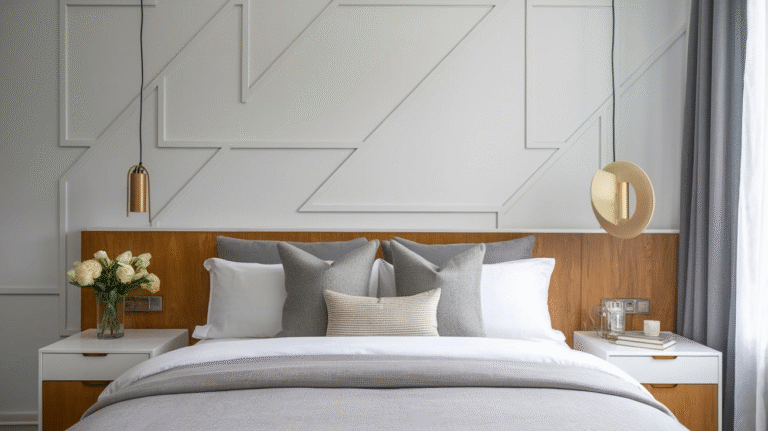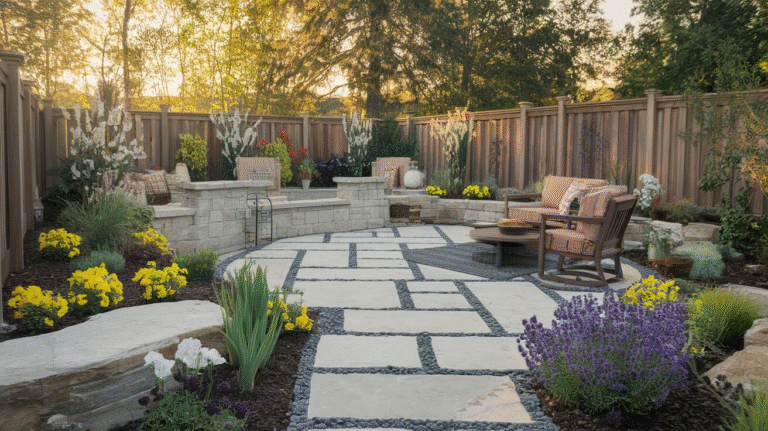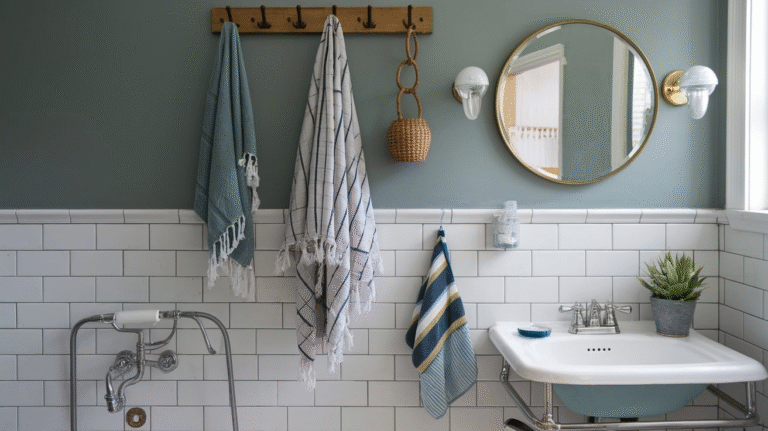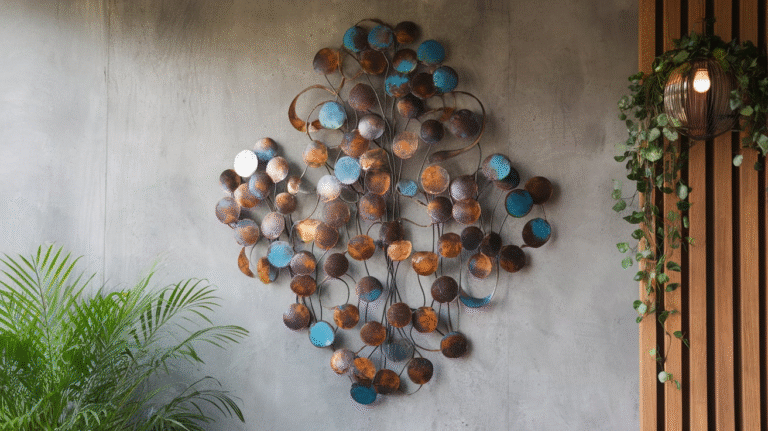12 Herb Garden Ideas for Fresh Flavors at Your Fingertips

Growing your own herb garden is a simple way to enjoy fresh flavors at your fingertips. Whether you’re cooking dinner or making tea, having herbs nearby adds taste and beauty to your home. Herb garden ideas can work in backyards, balconies, or even windowsills.
With so many ways to plant and arrange herbs, you can create a garden that matches your space and style. From raised beds to wall planters, herb gardens are easy to care for and perfect for beginners. Plus, they save you money and trips to the store.
These 12 herb garden ideas will help you grow a healthy supply of fresh herbs all year long. Whether you’re planting outside or indoors, you’ll find inspiration to make your garden both useful and beautiful.
1. Windowsill Herb Garden

A windowsill herb garden is perfect for small spaces and apartment living. With just a few pots and sunlight, you can grow fresh herbs right in your kitchen. It’s a convenient setup that keeps your favorite flavors close while you cook.
Use containers with drainage and place herbs like basil, chives, mint, or parsley on a sunny windowsill. Water regularly, rotate the pots for even light, and enjoy fresh herbs every day. You can also add labels for a cute and organized look.
2. Raised Bed Herb Garden
Raised beds are a great way to grow herbs in your backyard or patio. They provide good drainage, better soil control, and easy access without bending down too much. You can group herbs by type or grow them alongside vegetables and flowers.
Use untreated wood or metal to build a raised bed that suits your space. Plant sun-loving herbs like thyme, oregano, and rosemary in full sun. This setup works well for people who want to grow a variety of herbs in one spot.
3. Vertical Herb Garden

A vertical herb garden saves space while adding greenery to your walls or fences. It’s perfect for balconies or small patios where ground space is limited. You can use hanging pockets, stacked planters, or wall-mounted containers.
Herbs like mint, cilantro, dill, and parsley grow well in vertical setups. Just make sure they get enough sunlight and water. A vertical garden also adds a touch of style and color to any outdoor or indoor wall.
4. Potted Herb Garden
Potted herb gardens are easy to move, manage, and rearrange. You can grow herbs in clay pots, ceramic planters, or even recycled containers like mugs and tins. They work well indoors, on balconies, or in garden corners.
Keep herbs like basil, sage, and lemon balm in separate pots to manage watering needs. Group them on a shelf, table, or plant stand for a neat look. This idea is ideal for renters or anyone who wants a flexible herb-growing setup.
5. Hanging Herb Garden

A hanging herb garden adds beauty and function to your porch or balcony. Use hanging baskets, macrame holders, or even old colanders to grow your favorite herbs. It’s a fun and creative way to use vertical space.
Herbs like thyme, oregano, and trailing rosemary do well in hanging setups. Be sure to water them regularly, as hanging pots dry out faster. This type of garden is not only useful but also adds charm to your outdoor decor.
6. Kitchen Counter Herb Garden
A small herb garden on your kitchen counter keeps fresh ingredients within arm’s reach. Use a sunny spot near a window and choose compact herbs that grow well indoors. This setup is great for busy cooks who love adding flavor to their meals.
Pick herbs like basil, chives, and parsley that can grow in small containers. Use matching pots for a tidy look, and place them on a tray for easy watering. A kitchen counter herb garden is both practical and pretty.
7. Herb Spiral Garden
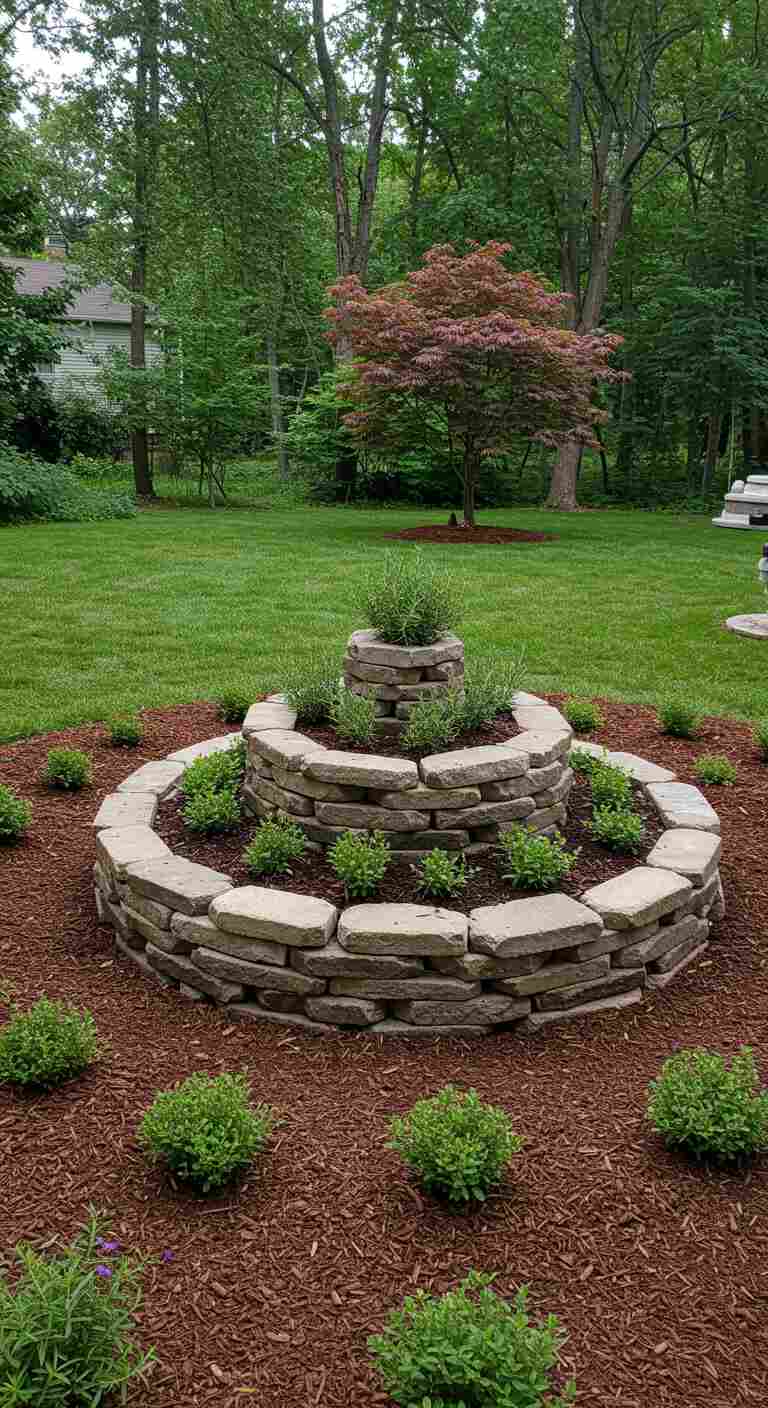
A herb spiral garden is a clever and decorative way to grow many herbs in a small space. The spiral shape lets you plant herbs at different heights, which helps with water drainage and sun exposure. It’s also a beautiful focal point for any garden.
You can build a spiral with bricks, stones, or wood. Plant Mediterranean herbs like rosemary and thyme at the top, and moisture-loving herbs like mint and parsley at the bottom. This layout supports healthy growth and saves space.
8. Indoor Mason Jar Herb Garden
Mason jar herb gardens are a stylish and simple way to grow herbs indoors. These clear jars look great on kitchen shelves or window ledges and let you see how your plants are growing. They make herb gardening fun and decorative.
Use jars with small rocks at the bottom for drainage and fill them with potting soil. Herbs like cilantro, dill, and basil do well in jars. Label each jar with a chalkboard tag or sticker for a farmhouse-inspired look.
9. Herb Garden in Recycled Containers
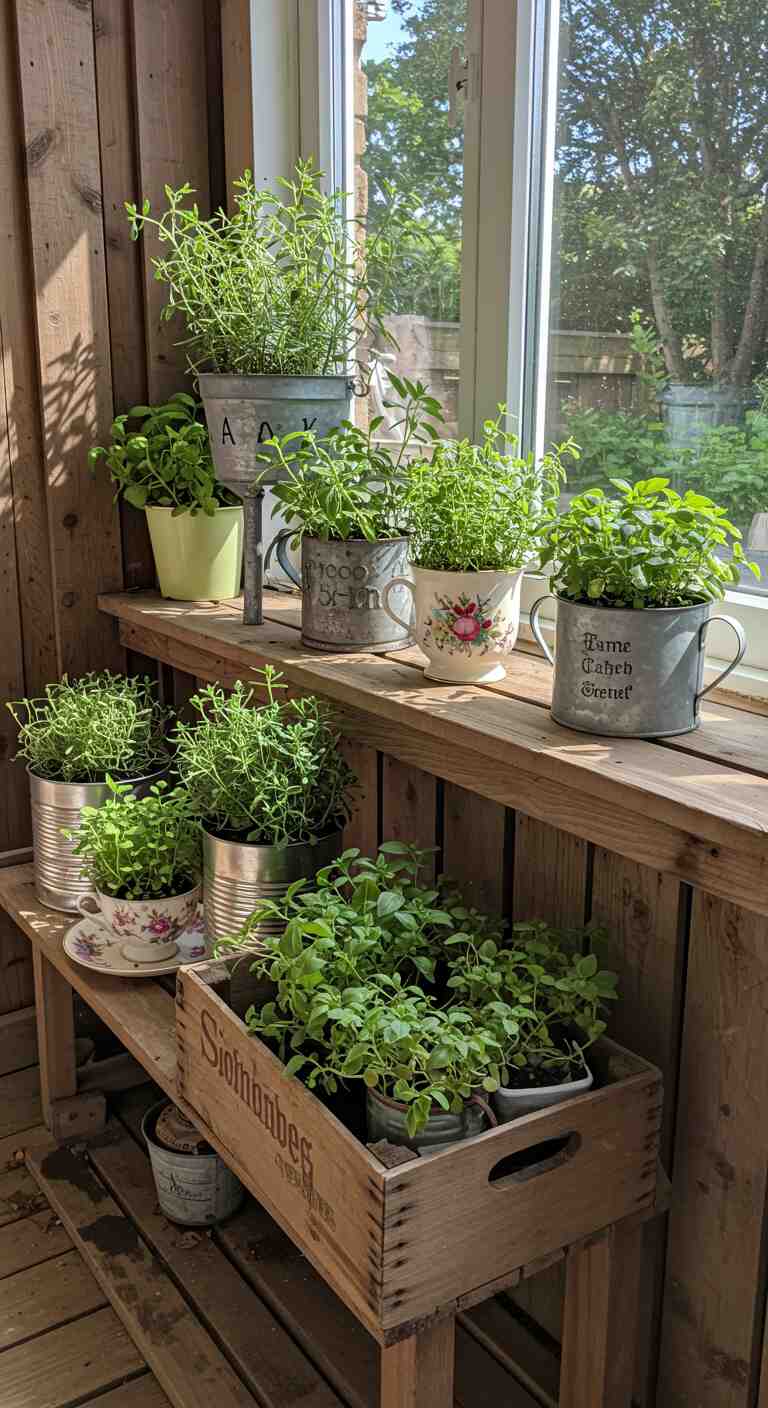
Recycling containers for your herb garden is an eco-friendly and creative option. You can repurpose cans, wooden crates, teacups, or even old boots. This adds personality to your garden and helps reduce waste.
Drill holes for drainage and fill your containers with healthy soil. Plant hardy herbs like sage, mint, or oregano. Arrange them on a bench or windowsill for a rustic and charming herb garden that stands out.
10. Wheelbarrow Herb Garden
Turning an old wheelbarrow into an herb garden is a fun and movable gardening idea. It gives your outdoor space a vintage look while keeping your herbs organized. You can roll it to sunny spots or bring it closer to your kitchen when needed.
Line the wheelbarrow with landscape fabric, add soil, and plant herbs like thyme, basil, and dill. It’s a great conversation piece and makes harvesting your herbs simple. Plus, it adds a farmhouse feel to any backyard or patio.
11. Herb Garden in a Wooden Crate
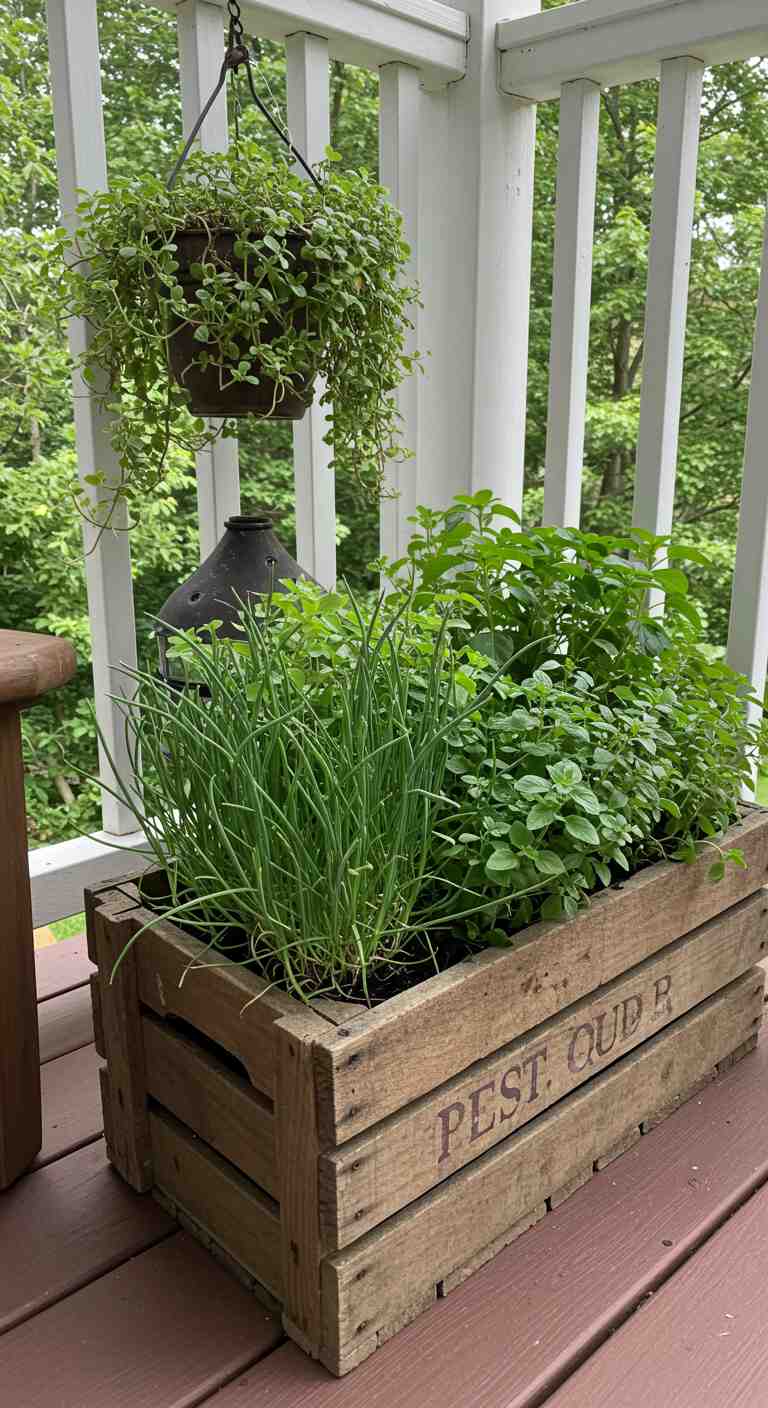
Wooden crates make charming herb planters that are easy to move and arrange. Stack them, line them up, or place them on your porch or patio for a tidy herb display. Crates give your herb garden a clean, country-style feel.
Add a plastic liner inside each crate to protect the wood and hold soil in place. Grow herbs like basil, oregano, and chives in these planters. You can paint or stencil the crates for extra personality and a handcrafted touch.
12. Pallete Herb Garden
A pallet herb garden is a great DIY project for any outdoor wall or fence. You can stand the pallet upright or lay it flat to hold small herb pots or plant directly into the gaps. It’s space-saving and very easy to personalize.
Sand the pallet, add landscape fabric behind the slats, and fill each layer with soil. Grow herbs like tarragon, mint, parsley, or basil. You can also paint the pallet or add labels for a rustic and organized garden display.

